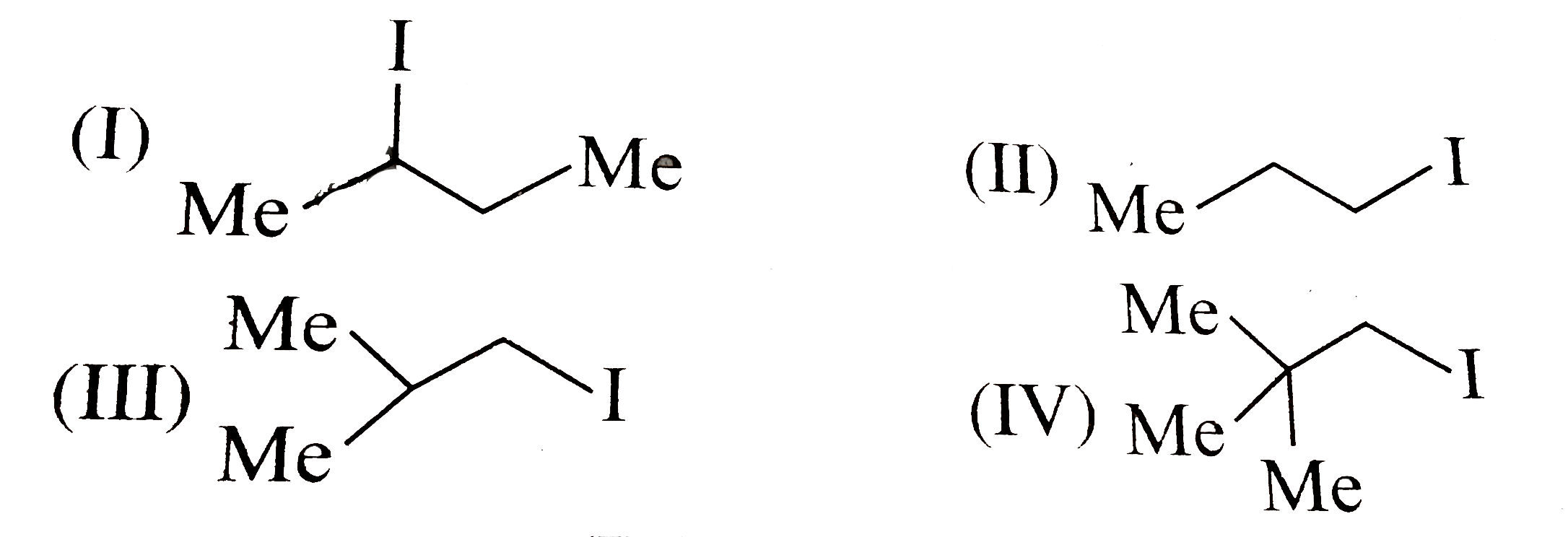In the dehydrohalogenation of ethyl chloride the following change occurs.
sp2 carbon converts to sp3 carbon
sp2 carbon convertes to sp carbon
sp3 carbon converts to sp carbon
sp3 carbon converts to sp2 carbon
The correct Answer is:D
To solve the question regarding the dehydrohalogenation of ethyl chloride (CH3CH2Cl), we will follow these steps:
Step 1: Understand the Reaction
Dehydrohalogenation refers to the elimination of a hydrogen atom and a halogen atom from a molecule. In this case, we are looking at ethyl chloride, which has the formula CH3CH2Cl.
Hint: Remember that dehydrohalogenation involves removing both a hydrogen atom and a halogen atom from the molecule.
Step 2: Identify the Reactants
The reactant in this case is ethyl chloride (CH3CH2Cl). We will also need a strong base to facilitate the elimination reaction. A common choice is alcoholic potassium hydroxide (KOH).
Hint: Strong bases are essential for dehydrohalogenation as they help in the abstraction of protons.
Step 3: Mechanism of the Reaction
When ethyl chloride is treated with alcoholic KOH, the hydroxide ion (OH-) acts as a base and abstracts a proton (H+) from the β-carbon (the carbon adjacent to the carbon attached to the halogen).
Hint: Identify the β-carbon in the structure of ethyl chloride to determine where the proton will be removed.
Step 4: Formation of the Alkene
The removal of the hydrogen atom from the β-carbon and the chlorine atom from the α-carbon leads to the formation of an alkene. In this case, the product will be ethylene (C2H4).
Hint: The elimination of H and Cl results in the formation of a double bond between the two carbon atoms.
Step 5: Change in Hybridization
Initially, the carbon atoms in ethyl chloride are sp3 hybridized. After the dehydrohalogenation, the carbon atoms involved in the double bond become sp2 hybridized. This change in hybridization is crucial as it indicates the formation of a double bond.
Hint: Keep in mind that sp3 hybridization corresponds to single bonds, while sp2 hybridization corresponds to double bonds.
Final Summary
In the dehydrohalogenation of ethyl chloride (CH3CH2Cl) using alcoholic KOH, hydrogen and chlorine are removed, resulting in the formation of ethylene (C2H4) and a change in hybridization from sp3 to sp2 for the involved carbon atoms.
Dehydrohalogenation refers to the elimination of a hydrogen atom and a halogen atom from a molecule. In this case, we are looking at ethyl chloride, which has the formula CH3CH2Cl.
The reactant in this case is ethyl chloride (CH3CH2Cl). We will also need a strong base to facilitate the elimination reaction. A common choice is alcoholic potassium hydroxide (KOH).
When ethyl chloride is treated with alcoholic KOH, the hydroxide ion (OH-) acts as a base and abstracts a proton (H+) from the β-carbon (the carbon adjacent to the carbon attached to the halogen).
The removal of the hydrogen atom from the β-carbon and the chlorine atom from the α-carbon leads to the formation of an alkene. In this case, the product will be ethylene (C2H4).
Initially, the carbon atoms in ethyl chloride are sp3 hybridized. After the dehydrohalogenation, the carbon atoms involved in the double bond become sp2 hybridized. This change in hybridization is crucial as it indicates the formation of a double bond.
In the dehydrohalogenation of ethyl chloride (CH3CH2Cl) using alcoholic KOH, hydrogen and chlorine are removed, resulting in the formation of ethylene (C2H4) and a change in hybridization from sp3 to sp2 for the involved carbon atoms.
Topper's Solved these Questions
- HALOALKANE AND HALOARENESBOOK - NARAYNACHAPTER - HALOALKANE AND HALOARENESEXERCISE - EXERCISE - II (C.W)
28 Videos
- HALOALKANE AND HALOARENESBOOK - NARAYNACHAPTER - HALOALKANE AND HALOARENESEXERCISE - EXERCISE - II (H.W)
28 Videos
- HALOALKANE AND HALOARENESBOOK - NARAYNACHAPTER - HALOALKANE AND HALOARENESEXERCISE - EXERCISE - I (C.W)
30 Videos
- F-BLOCK ELEMENTSBOOK - NARAYNACHAPTER - F-BLOCK ELEMENTSEXERCISE - CHECK YOUR GRASP
2 Videos
- HALOGEN COMPOUNDSBOOK - NARAYNACHAPTER - HALOGEN COMPOUNDSEXERCISE - Passage 13
1 Videos
Similar Questions
Knowledge Check
Reaction of ethyl chloride with sodium in presence of dry ether leads to
AEthaneBPropaneCn-butaneDn-pentaneThe reactivity of ethyl chloride is
AMore or less equal to that of benzyl chlorideBMore than that of benzyl chlorideCMore or less equal to that of chlorobenzeneDLess than that of chlorobenzeneReaction of ethyl chloride with sodium leads to :
AEthaneBPropaneCn - butaneDn - pentane
The reactivity of ethyl chloride is :
View SolutionDehydrohalogenation of ethyl chloride in presence of alc. KOH produces the following
View SolutionThe decreasing order of dehydrohalogenation of the following compounds is :
 .
.
View SolutionEthyl chloride is not useful in preparing
View SolutionEthyl alcohol reacts with acetyl chloride to form
View Solution
